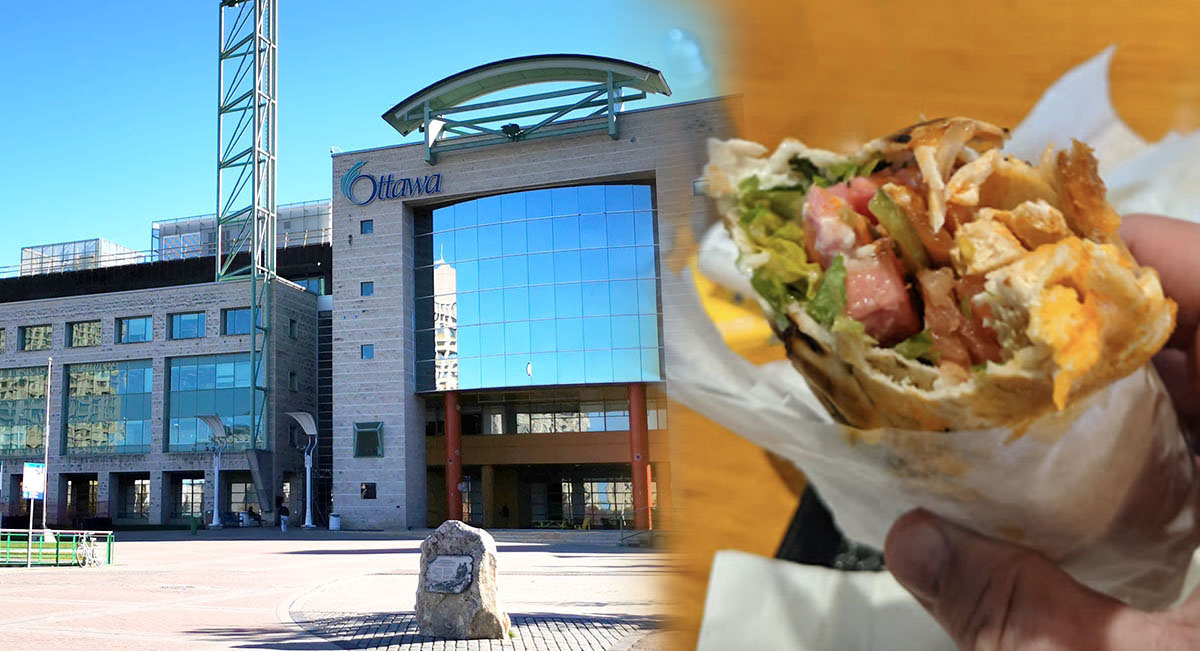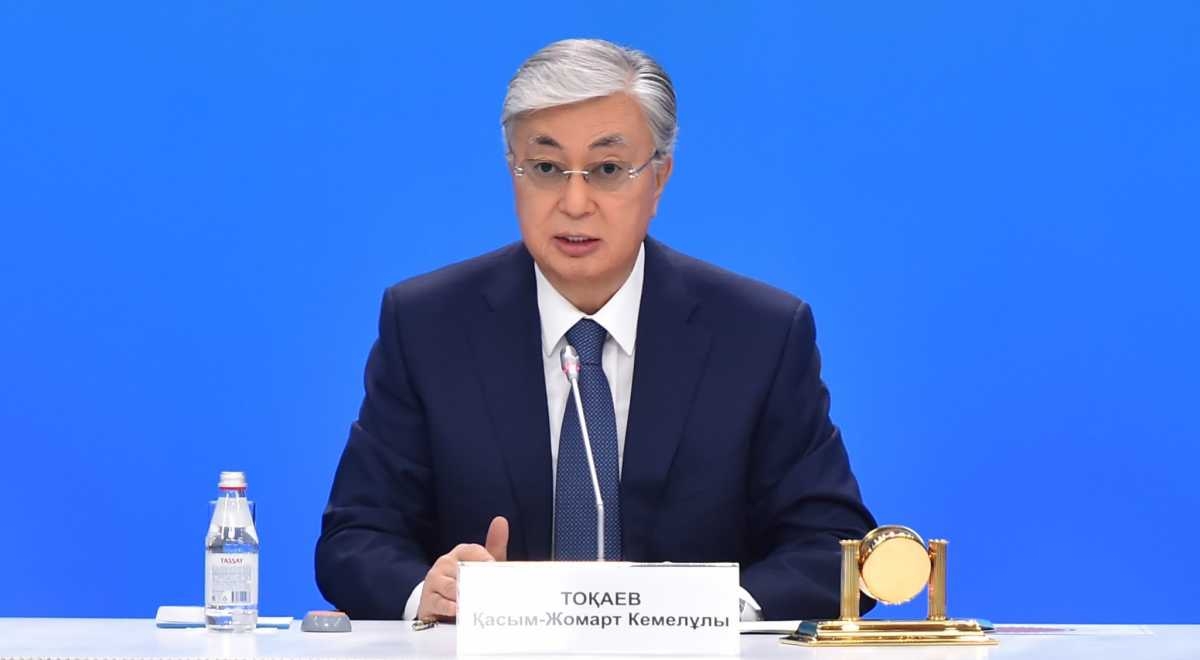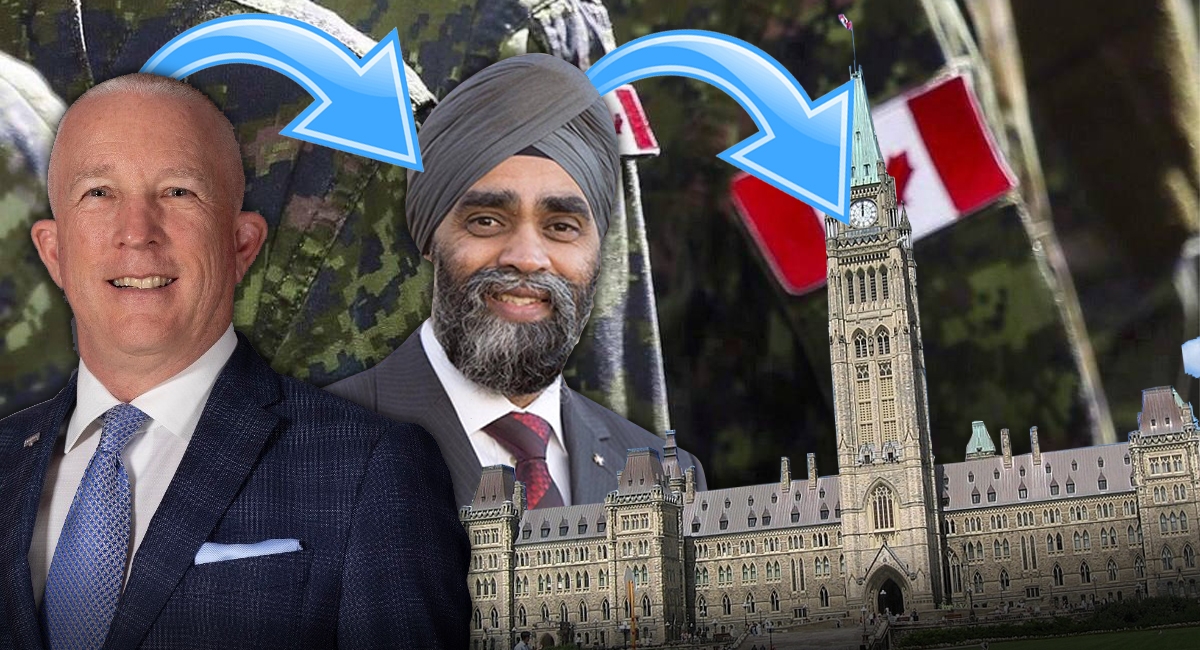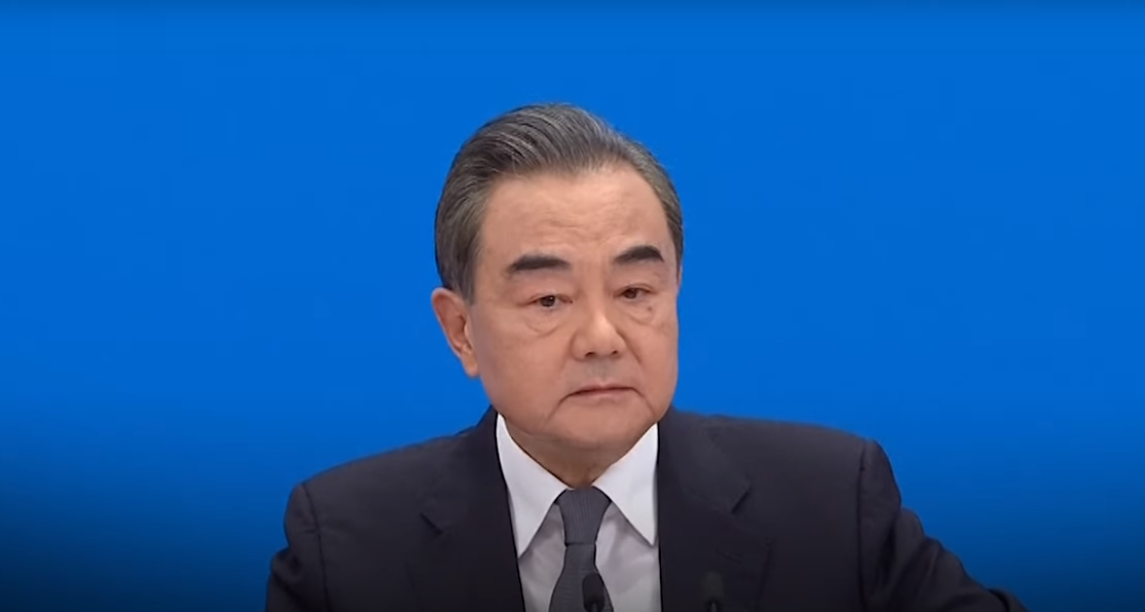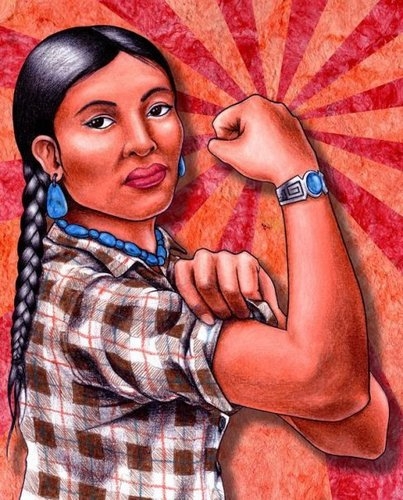
First Nations Taxation
A message from Ottawa Life Magazine’s publisher Dan Donovan:
Prime Minister Stephen Harper will meet in Ottawa with First Nations leaders this week to discuss treaty and aboriginal rights and economic development. The current state of Aboriginal relations in Canada is at an all-time low and the treatment of Canada’s aboriginal community is surely the shame of our generation. Most agree that the key problem is governance. The Indian Act is an antiquated and obscene tool that should have been renegotiated or thrown in the dustbin long ago. The Department of Aboriginal Affairs and Northern Development Canada (AANDC) is the most incompetent department in the federal government and should be permanently shut down. Structures are currently in place that would allow for Canada’s aboriginal communities to run their own affairs either through their national organizations or through a series of Treasury Board agreements. Many such agreements are already in place with all the provinces for the delivery of health care and other services. Money that now goes to AANDC would go to the national associations and they would manage all aboriginal affairs for their communities. As with the provinces, provisions are available for the federal government to hold funds in cases where funds are mismanaged. One of the great myths of our day is that aboriginal communities mismanage their funds or are financially irresponsible. While there are examples of this each year where this happens, the facts are that the mismanagement of funds in aboriginal communities is small and as a percentage is no different from those same problems in non-aboriginal communities. The difference is that when it occurs in an aboriginal community there is a lot more coverage of these incidents.
Over the next year, Ottawa Life Magazine will publish a web series titled Myths versus Facts about Canada’s Aboriginal Community. Today we begin with the Myths versus Facts regarding Aboriginal Taxation.
Roll up your sleeves, nitôtêmitik! Today we’re tackling First Nations taxation!
The short answer first:
- The Indian Act First Nations tax exemption is very narrow and applies only to personal property and income located on a reserve.
- First Nations pay all other taxes not covered by the narrow exemption.
- The tax exemption only involves about 272,000 First Nations people when you subtract the number of children aged 0-14 from the potential tax paying base.
- That number is actually even lower because a number of First Nations have exchanged tax exemption for other benefits in self-governing Final Agreements.
But Indians don’t even pay taxes. Why should they get my tax dollars?
I’m sending you the dry-cleaning bill. Just saying.
This is one of the most common complaints that comes up in any discussion of any news story concerning First Nations. I am going to focus on the factual aspects of First Nations taxation more than the philosophical discussions of ‘who should be taxed’ and ‘where should my taxes go’, so I’m not going to answer your question in its entirety.
The first thing you need to know is that most aboriginal peoples don’t get tax exemptions. The tax exemptions that do exist are linked completely to the reserves, so non-Status Indians, Inuit, Métis, and most Status Indians living off reserve, don’t get any tax exemptions at all. That narrows down the people eligible for tax exemptions by a pretty huge margin.
In 2006, there were 1,172,790 First Nations, Métis and Inuit. Out of that, 623,780 were Status Indians (called Registered Indians in the table). Again, I focus on Status Indians (the legal term) because later on you’ll see that only they have access to the tax exemptions being discussed here.
Out of that, about 299,970 Status Indians were living on reserve, give or take based on not-totally complete census results. [Filter by area of residence to see this.] It is this group that account for the majority of people who are eligible for the tax exemptions under discussion.
But what about the 300,000 – 400,000 Indians that don’t pay any taxes?
I hate to do this to you (no I don’t), but I can’t start this discussion until I whittle the numbers down a little more for you. I think it’s important we keep in mind the actual numbers at play here before we decide to get hysterical about money pouring out of our pockets like a river of multicoloured polymer substrate bills.
I’m not going to point out that in 2006, [sort by age group to check my numbers] there were 196, 285 Status Indians between the ages of 0-14 for a whopping 32% of the total Status Indian population, significantly decreasing the population of potential First Nations tax payers.
I’m not going to mention that the number of Status Indians on reserve who would even beeligible to pay income taxes absent a tax exemption, was only 198,310 [change the filter on ‘area of residence’ and then filter by age group]. Unless you think kids aged 0-14 should be included in the labour force and paying income tax. (“But their tiny hands are ideal for polishing the insides of shells!”)
Or, if we are more generous and assume there are actually about 400,000 Status Indians living on reserve and 32% of them are under 14, then it’s 272,000 people that would be eligible to pay income taxes absent the tax exemption. That is also assuming you can actually work until you die of extreme old age, paying income taxes all the while.
I’m not going to point out that this number is pretty reliable year after year, given that the birthrate among First Nations people is pretty high, keeping the 0-14 age group amounts steady if not increasing each year.
I won’t finish up highlighting the fact that what we’re actually talking about here is about 272,000 people across Canada who have access to Indian Act tax exemptions, because I suspect the total numbers aren’t the issue so much as the principle of the thing.
I’m not even going to bother with that stuff, because I want you to know that there are more than 120 First Nations communities across Canada that have an on-reserve property tax regime, generating about $70 million in revenues annually. A list of those reserves can be found here, organised by province. The taxes are collected by the Bands, and used for the Bands.
In addition, there are communities that have negotiated self-governance and other alternate tax regimes with the federal government so that the Band levies things like the First Nations Sales Tax, the First Nations Goods and Services Tax, and/or the First Nations Personal Income Tax. In the Yukon Territories, for example, 11 out of the 14 First Nations are no longer tax exempt under self-governing Final Agreements. This reduces the total number of people actually eligible for Indian Act tax exemptions even more.
This doesn’t affect the overall question you have about who should pay taxes and where that money should go of course, but I thought you might like to know that out of the 616 First Nations reserves in this country, close to 20% of them have a property tax regime, and some of them have even more comprehensive taxation regimes in place.
So a few of them pay property taxes (and a few other taxes) that don’t benefit me at all, what’s your point?
Well the claim that is often made is that First Nations don’t pay any taxes at all. That might not be the real issue, but it’s certainly worth addressing so that more people understand the reality of the situation. I hope you don’t mind if I continue then.
I am going to quote INAC here (now the unpronounceable AANDC):
In general, Aboriginal people in Canada are required to pay taxes on the same basis as other people in Canada, except where the limited exemption under Section 87 of the Indian Act applies. Section 87 says that the “personal property of an Indian or a band situated on a reserve” is tax exempt.
Alright. Do you have your Timmy’s coffee ready? I feel like using a list format to break this down for you.
- • This tax exemption applies to both federal and provincial taxes like income and sales taxes.
- • Non-status Indians are not eligible for this tax exemption.
- • Status Indians who don’t live on reserve are not generally eligible for this tax exemption, unless they are purchasing goods and services on reserve or are employed on reserve.
- • Goods that are purchased on reserve are exempt.
- • Goods that are purchased off reserve and are delivered to the reserve by the retailer’s official agent are tax exempt. If a Status Indian wants to transport goods back to the reserve, then legally they are not exempt. Taxes on meals, movie tickets, and a host of other things that couldn’t conceivably be brought back to the reserve are also not tax exempt.
- • Services provided on reserve are tax exempt. Services provided off reserve are not tax exempt, unless under Section 90 of the Indian Act, the services were purchased with “Indian monies”. That means ‘official Band monies’, used for things like off-reserve lawyer fees, accountant fees and so on. Average Band members aren’t accessing those funds, so the services they purchase aren’t tax exempt.
- • Income is considered ‘personal property’ if it’s earned on reserve. Once you work off reserve, that exemption does not apply and you’re paying income taxes…even if your employer is situated on the reserve. If your duties are off-reserve in nature, it’s off-reserve income and taxable. Are there some nitpicky exceptions? With taxation there always are, but this is the general rule.
- • First Nations corporations and trusts don’t qualify for the Section 87 tax exemption. INAC explains this pretty well, pointing out that legally a corporation is a separate ‘legal person’ and is not therefore an “Indian”.
Do you have more specific questions about taxation as it relates to investment income or other areas? Feel free to look into it!
What about those people who are using their Status cards for point-of-sale exemptions and aren’t living on reserve or having goods delivered there?
There are a variety of provincial policies that attempt to make point-of-sales exemptions less painful for all involved. Some of these policies were created to deal with confusion surrounding the implementation of the Harmonised Sales Tax (HST) which blends provincial and federal sales taxes. These policies respect the specific exemption we’ve been discussing here, but may provide more relaxed enforcement policies for the provincial portion.
For example, some provinces waive the enforcement of the delivery rule on the provincial portion of the sales tax, allowing a First Nations person to transport goods to the reserve his or herself. Part of the reasoning here is that requiring delivery to be made by an agent of the vendor has the potential to negate the exemption, as any savings incurred are eaten up by delivery fees. Other provinces have harmonised their provincial policies with federal policies.
I mention this because the issue is confusing. Many salespeople do not really understand the exemption and the limitations on it, and some First Nations people aren’t totally clear on it either. The implementation of this tax exemption can then run into practical problems when people either intentionally or unintentionally mess up how the exemption is applied.
However, the issue is what the legal exemption actually is versus what many believe it to be. It is important to understand the actual legal exemption rather than characterising the issue by the instances of ‘cheating’.
Even if every single Status Indian in this country (including infants at the breast) were to abuse point of sale rebates, we’d be talking about 600,000 people at most ‘cheating the system’. How many people cheat the system beyond that, claiming fake work expenses, not declaring tips, not declaring other income and so on?
Tax evasion is not unique to any group of people, it is a wider reality.
That still means a bunch of them aren’t paying Income Taxes, which is big time revenue!
I recognise that personal income tax revenue accounts for over 20% of total revenue federally and 15% on average provincially (with a range from 2.3% to 26.6% depending on the province or territory).
Sales taxes account for 11% of total revenue federally, and 8.4% on average provincially (with a range from 0% to 16.2% depending on the province or territory).
This is what a lot of people think about. Money that isn’t there because of the tax exemption. Potentially a lot of money not going into public coffers to help pay for social programs.
This argument dismisses the fact that there are other segments of the Canadian population that do not pay income taxes either. I am not going to look up raw numbers on this, because I think it is beside the point.
But that IS the point, isn’t it?
Here is why I disagree.
I think there are two possible arguments you are making here:
- • You think that people who do not pay income taxes or sales taxes, should not then be eligible for programs paid for from those tax revenues.
- • You want to have a say in where your tax dollars go.
If you are arguing point 1, then you aren’t just talking about First Nations people. Not if you want to approach the issue honestly. If you believe that only people contributing to these particular tax revenues should receive social programming, then you and I disagree on a fundamental philosophical level that is beyond the scope of First Nations taxation. I’d even suggest you disagree with a general Canadian belief that does not link individual taxation amounts to eligibility for social programming. That generalised discussion should be engaged in elsewhere, not merely trained on First Nations people.
If you are arguing point 2, then again you are engaging in a topic that is far beyond the scope of merely First Nations taxation. There are any number of arguments you could make about how you, the individual tax payer, should be able to direct the spending of your tax dollars (“Why should I pay for programs I will never access?” being a common complaint). However, the fact is the Canadian government has set up a particular tax spending regime that you have minimal individual control over. Once more this issue should not be narrowed to only apply to First Nations.
Then why do Status Indians living on reserve get this tax exemption in the first place?
Allow me to once again quote INAC on that:
- • A tax exemption for Indian property situated on reserves has existed since before Confederation.
- • The Supreme Court of Canada has stated that this exemption is linked to the protection of reserve land and property.
- • The Court has concluded that the purpose of the exemption is to make sure tax does not erode the use of Indian property on reserves.
- • The Court has indicated that this tax exemption is not intended to remedy the economically disadvantaged position of Aboriginal people in Canada or bring economic benefits to them.
This may not satisfy you. If that is the case, then you are going to have to delve deeper into the history of this country to understand why this tax exemption was set up.
What I have just said might also not satisfy you. Perhaps you came here figuring I would answer all your questions. So can I ask you a question?
Why are churches tax exempt? Why are non-profit corporations tax exempt? Can you provide me with a quick and satisfying answer without a historical and sociological explanation?
My main purpose here was to address the claim that “Indians don’t pay taxes”. It isn’t an accurate statement at all, and I hope you understand this better now. The various justifications for the narrow tax exemption that does exist are more in the nature of a historical and philosophical discussion that can be had elsewhere or at another time.
If you had anywhere near the amount of coffee I’ve ingested while writing this, you’ll probably appreciate this being wrapped up now! My thanks for your time.
By âpihtawikosisân
Read more from her blog at apihtawikosisan.com
Find online applications for work with Canadian companies – http://www.job-

